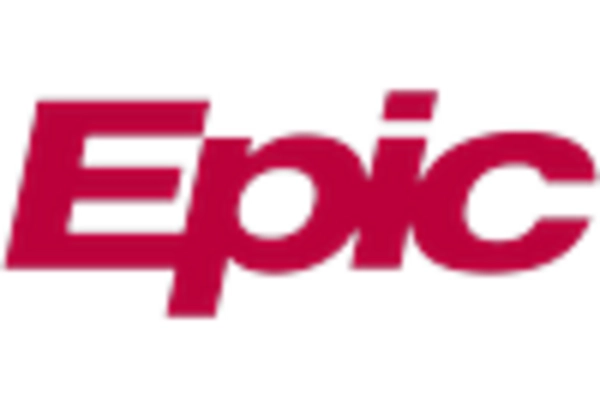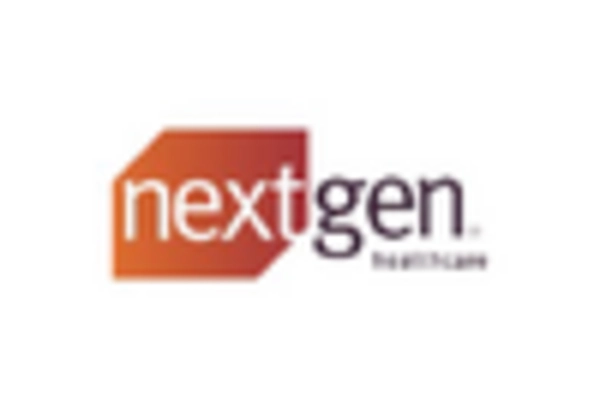The Medical Practice Management Software Market is currently characterized by a dynamic competitive landscape, driven by the increasing demand for efficient healthcare management solutions. Key players are focusing on innovation, digital transformation, and strategic partnerships to enhance their market positioning. Companies such as Epic Systems Corporation (US), Cerner Corporation (US), and Athenahealth, Inc. (US) are at the forefront, leveraging their technological capabilities to offer comprehensive solutions that streamline operations and improve patient care. Their collective strategies not only foster competition but also push the boundaries of what is possible in healthcare management, indicating a shift towards more integrated and user-friendly systems.
In terms of business tactics, companies are increasingly localizing their operations and optimizing supply chains to better serve diverse markets. The competitive structure of the Medical Practice Management Software Market appears moderately fragmented, with several players vying for market share. However, the influence of major companies like McKesson Corporation (US) and eClinicalWorks LLC (US) is substantial, as they continue to set benchmarks for quality and innovation, thereby shaping the overall market dynamics.
In August 2025, Epic Systems Corporation (US) announced a strategic partnership with a leading telehealth provider to enhance its software capabilities. This collaboration aims to integrate telehealth services directly into their management software, thereby improving accessibility for patients and streamlining workflows for healthcare providers. Such a move underscores the importance of adaptability in the current market, as telehealth continues to gain traction.
In September 2025, Cerner Corporation (US) launched a new AI-driven analytics tool designed to optimize patient scheduling and resource allocation. This tool is expected to significantly reduce wait times and improve operational efficiency within healthcare facilities. The introduction of AI technologies reflects a broader trend towards automation and data-driven decision-making in the industry, positioning Cerner as a leader in innovative solutions.
In July 2025, Athenahealth, Inc. (US) expanded its cloud-based services to include enhanced patient engagement features, such as personalized health reminders and educational resources. This strategic enhancement aims to foster better patient-provider communication and improve health outcomes. By focusing on patient engagement, Athenahealth is likely to differentiate itself in a crowded market, emphasizing the importance of user experience in software design.
As of October 2025, the competitive trends in the Medical Practice Management Software Market are increasingly defined by digitalization, AI integration, and a focus on sustainability. Strategic alliances are becoming more prevalent, as companies recognize the value of collaboration in driving innovation. Looking ahead, it appears that competitive differentiation will increasingly hinge on technological advancements and the ability to provide reliable, efficient solutions, rather than merely competing on price. This shift suggests a promising future for companies that prioritize innovation and adaptability in their strategic frameworks.

















Leave a Comment